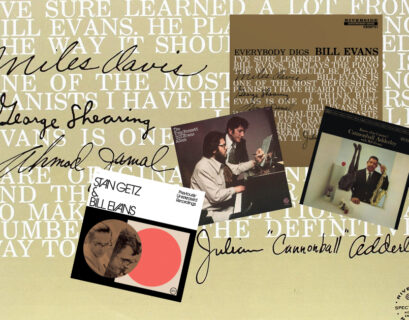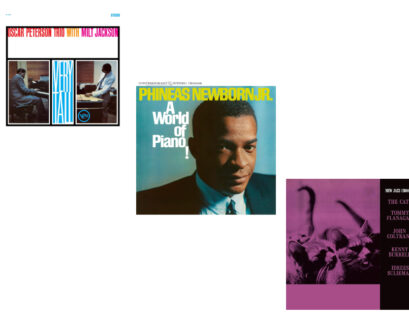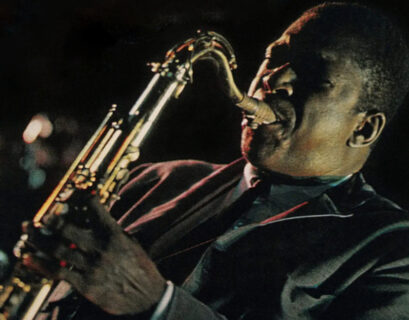It’s the time of year for saving money!
Before I can tell you about how nice this 1959 reissue sounds, its probably important to answer a question some of you probably have: who is George Russell?
It is a good question. He was on the 1950’s jazz scene in New York, part of a group of innovators who aligned themselves with Gil Evans (whose album I reviewed just yesterday, click here, not entirely coincidentally) including Miles Davis, Charlie Parker, Gerry Mulligan, and John Lewis.
Russell was especially noted for his theoretical work, particularly his influential Lydian Chromatic Concept of Tonal Organization (according to the Wiki, the first edition of his book was published in 1953, while he worked as a salesclerk at Macy’s). His ideas were stepping stones toward landmark modal music albums such as Miles Davis’ Kind of Blue. Russell soon became a composer writing for the likes of Dizzy Gillespie, Buddy DeFranco and others, also issuing albums as a leader under the Jazz Workshop umbrella.
So that is the quick back story on Mr. Russell…
This helps to explain how a relatively unknown name to the public might get to issue an album on a major label like Decca Records. His New York is a musical portrait of The Big Apple featuring a A-list cast which includes John Coltrane, Bill Evans, Max Roach, Jon Hendricks, Charlie Persiop, Milt Hinton, Al Cohn, Barry Galbraith, Art Farmer, Benny Golson, Phil Woods and many others…
Musicians liked Mr. Russell, clearly.
As to what might have inspired his making a musical tribute to Manhattan with hep jazz, almost kitschy dialogue before each section of the suite, I can only guess. But I’ll take an educated leap that it might have been inspired by an earlier and very popular Decca Records release from 1946 created by Gordon Jenkins called Manhattan Tower.
Incredibly dated now to the point where it is almost humorous to listen to, that release traces the arrival of a young man into the hustle and bustle of New York City, the glory of his first apartment and the joys and challenges of living there. Replete with celestial choirs and over the top orchestral arrangements and over-earnest dialogue, that album was clearly very popular as it made the transition from 78 RPM to 33 1/3 and even was expanded over the years and fully re-recorded in high fidelity in 1956. It stayed in print into the 1970s!.
George Russell’s New York is a much hepper, cooler place to live in than Gordon Jenkins’ cliche’d golly-gee-whiz vision of 1940s city life and I suspect that is in part why it is getting the reissue treatment these days. It is a good recording! Jon Hendricks’ dialogue and beat-rapping is limited so this is mostly a musical travelogue but the journey is quite lovely and at times even wondrous.
Most importantly, New York sounds terrific. And even though I don’t have an original pressing I suspect this edition sounds better than even a mint copy from back in the day — Decca Records in the 1950s was known for pressing its records on styrene plastic, not vinyl, which didn’t wear well (especially on the heavier tonearms of the 1950’s) and often lent a harsh tone to the music.
I’ve never seen a copy out in the wilds of collecting and in line with that reality, at the time of this writing there was only one “near mint” copy listed on Discogs (the record collecting website). This new Acoustic Sounds reissue is top drawer, pressed on thick dark, quiet and well centered black vinyl, presented in a high quality glossy gatefold sleeve. They even seem to have gotten the period labels recreated accurately.
So, do you need to get George Russell’s New York? I would think so just because it is an interesting concept piece and it is great to hear all of these players in a larger group setting than they would become known for in later years, especially Coltrane and Evans.
Below is a little taste from it which encapsulates the chill vibe of Manhattan’s upper East Side very well (I lived there for a bit in the 80s, so this resonates with me) including Vernon Duke’s “Autumn In New York.”




















